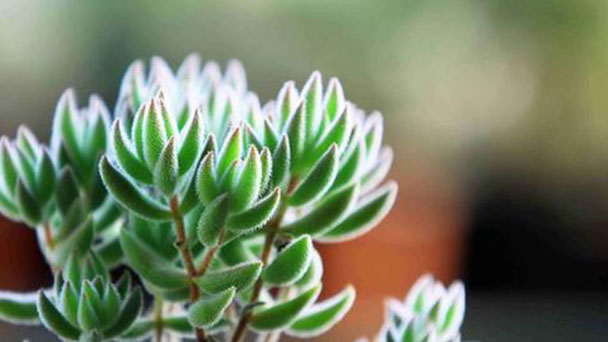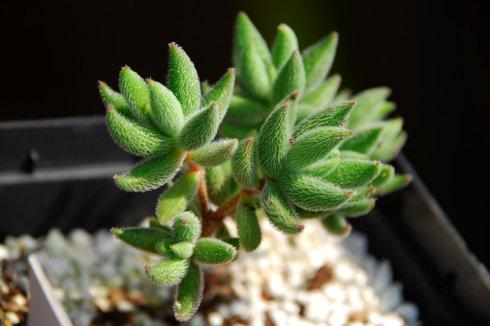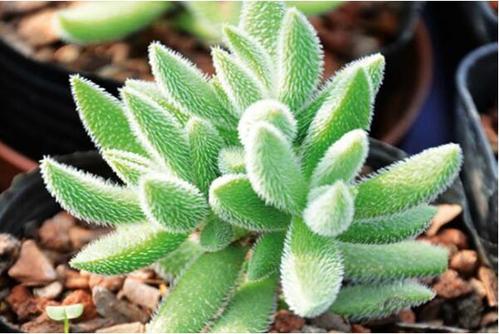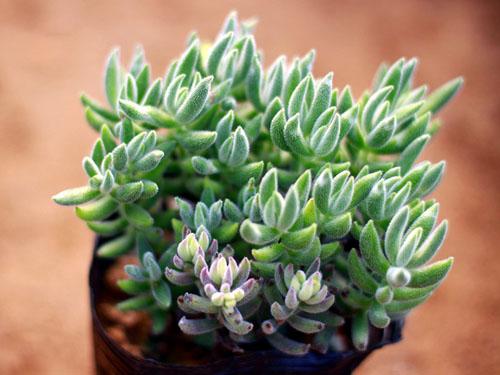Crassula Mesembryanthoides profile
Written by Maggie
Dec 02 2020

Crassula Mesembryanthoides prefers warm, dry and sunny conditions, and is afraid of low temperatures and frost and snow, tolerates semi-shade, and has no obvious dormant period. There is a brief dormancy of high temperatures in summer and a growing season of Crassula Mesembryanthoides in winter.
Crassula Mesembryanthoides picture

Crassula Mesembryanthoides growth environment
Crassula Mesembryanthoides prefers sunshine, which is green in daily life. It will gradually change color when sunshine time increases and temperature difference increases. Crassula Mesembryanthoides can get full sun and enjoy dry, warm growing conditions. It’s water demand is not much, too much water is easy to breed diseases and waterlogging death. In summer high temperatures, it comes into dormancy. Pay attention to reduce watering. In winter it can continue to grow. Crassula Mesembryanthoides is very easy to group, the way of propagation is based on cuttage, but also leaf insertion.
Sunshine time
Outside Xinjiang Crassula Mesembryanthoides can be full of sun. In Xinjiang area in summer, it needs shade.
Moisture
Water twice a month.

Crassula Mesembryanthoides cultivation techniques
Crassula Mesembryanthoides grows at a moderate temperature of 15-25 degrees, not less than 5 degrees in winter. Soil: generally can be peat, vermiculite and perlite mixed soil, and can also be peat and coarse sand mixed soil. Watering in the growing period is generally dry and thoroughly watered, and keeping the basin and soil dry in winter. Fertilization usually takes place every 2 months during the growing season.
The Crassula Mesembryanthoides breeding method
Crassula Mesembryanthoides were used for cutting propagation, which could be carried out all the year round. With fast rooting in spring and autumn and high survival rate, relatively orderly branches and leaves were selected and inserted into the sand basin. After 20-25 days of rooting, the roots could be put into a basin when the root length was 2-3 cm.

Latest Updated
- Benefits of Bugleweed - 7 Science-backed Health Benefits
- Bugleweed Dangers & Side Effects - Is It Poisonous?
- How to Plant Evergreen Trees - What You Should Know
- When to Plant Evergreens - Grow Guide for Evergreen Trees
- 12 Wonderful Evergreen Shrubs for Your Garden
- 12 Popular Evergreen Plants with Pictures for Beginners
- When And How To Prune A Lilac Bush Like a Pro
- How to Grow & Care for Lilac Vine (Hardenbergia Violacea)
- Japanese Lilac Tree (Syringa Reticulata) Care & Propagation Guide
- Shumard Oak Pros and Cons - What to Know
Popular Articles
- Winter maintenance of Antirrhinum Majus
- How to Grow Terminalia Mantaly Tree
- How to Grow and Care for Crossostephium Chinense
- How to grow Antirrhinum Majus in spring
- Peristeria Elata (Dove Orchid) Profile: Info & Care Guide
- Underwatered Snake Plant (Sansevieria Trifasciata) - Signs And How To Fix
- How to Care for Brazilian Jasmine Plant (Mandevilla Sanderi)
- How to Grow & Care for Graptopetalum Purple Delight in Summer
- Rosa Chinensis (China Rose): Plant Growing & Care Tips
- How to Care for Baby Sun Rose (Aptenia Cordifolia)